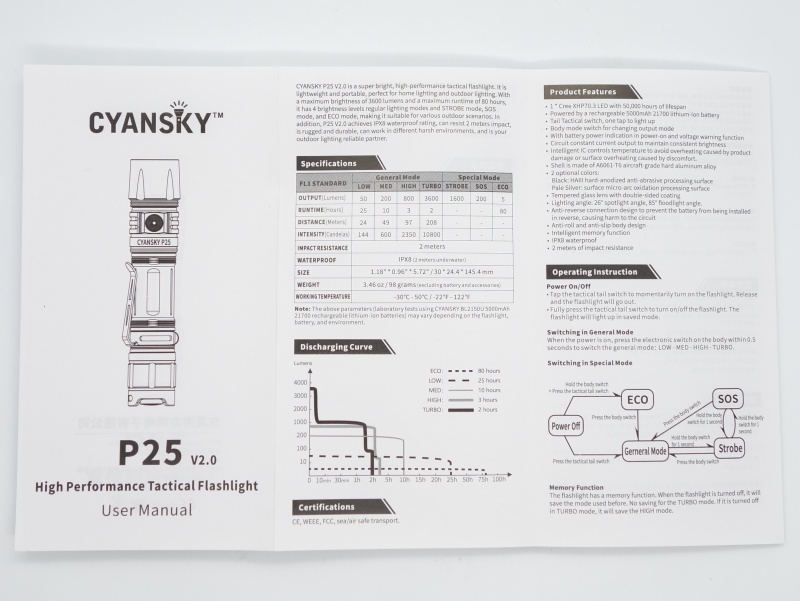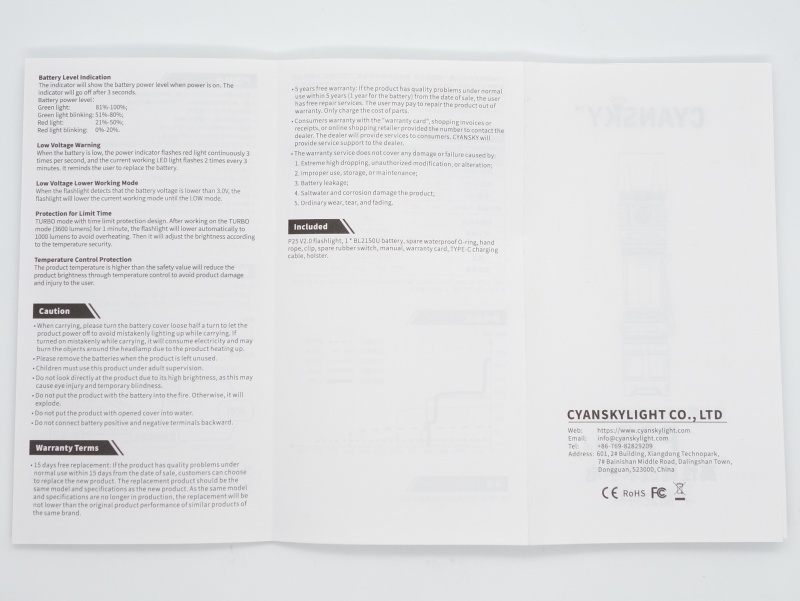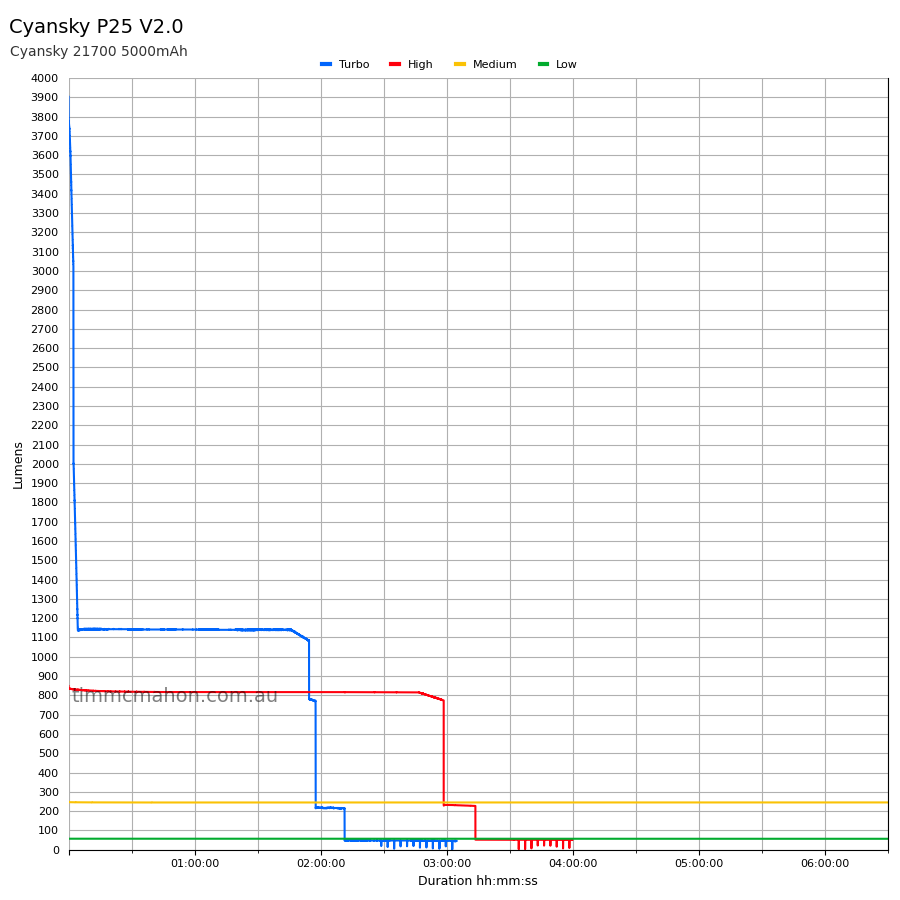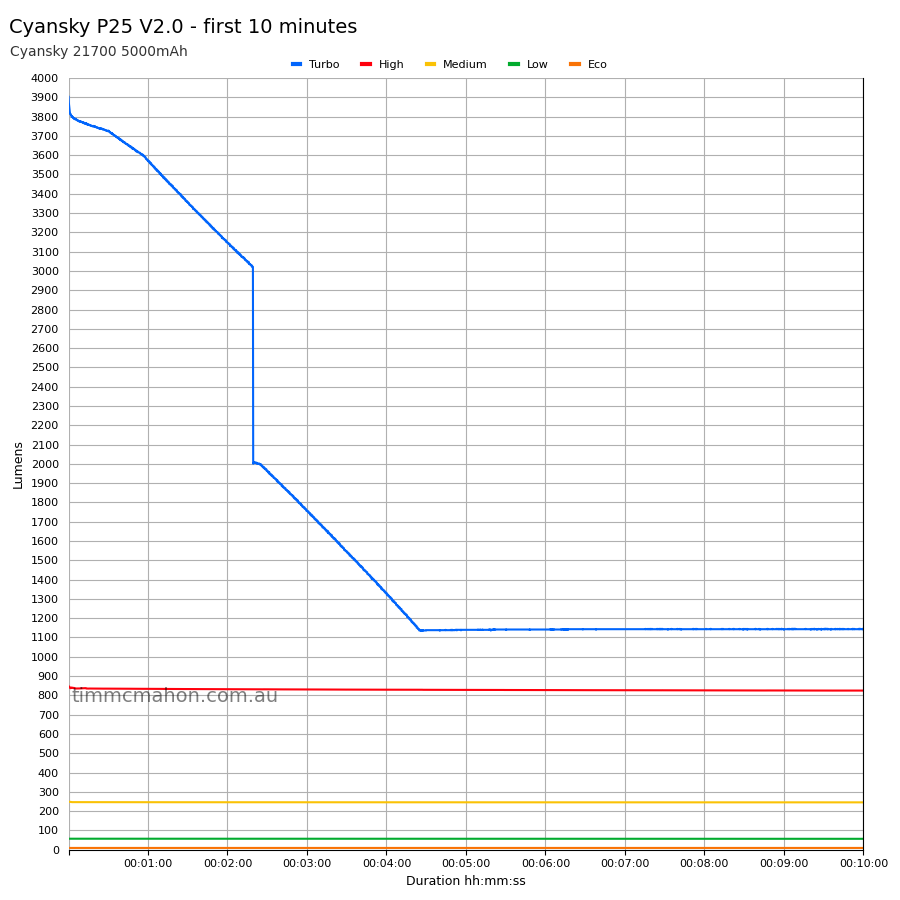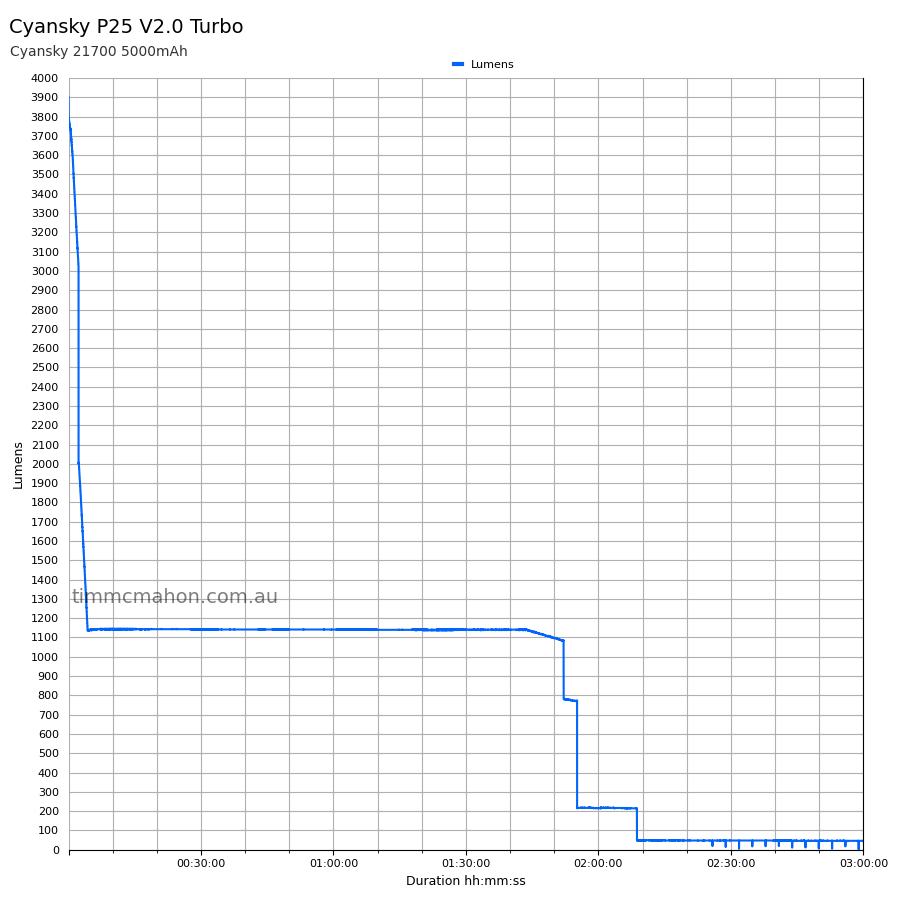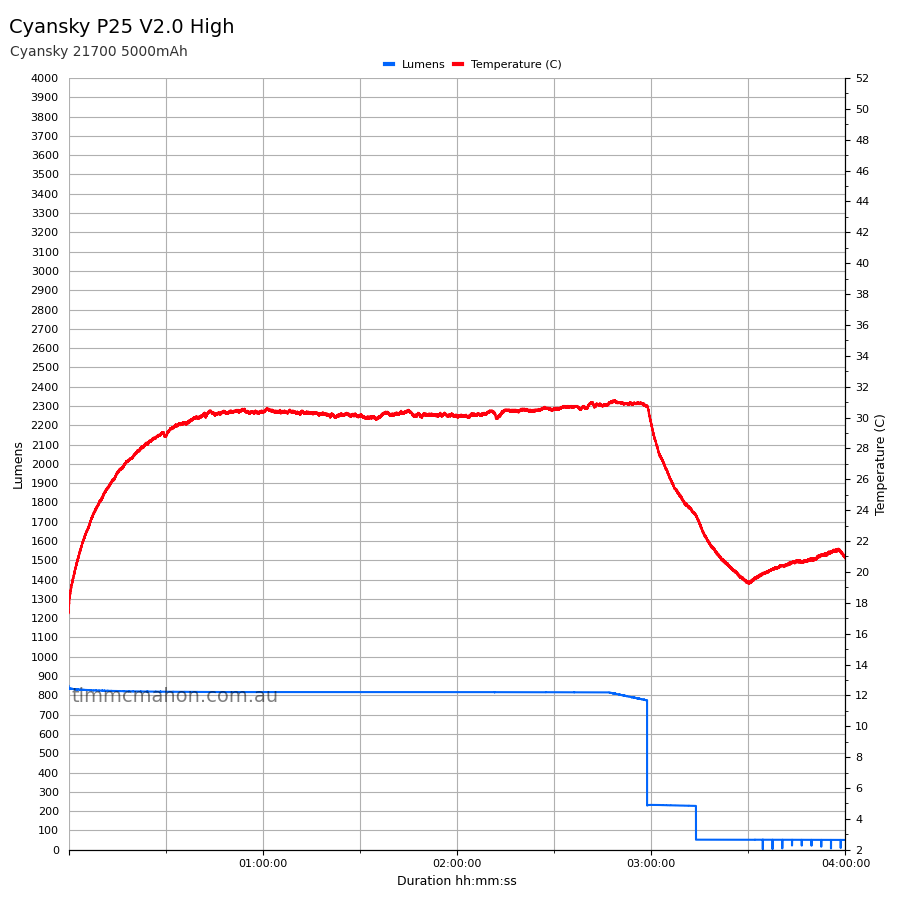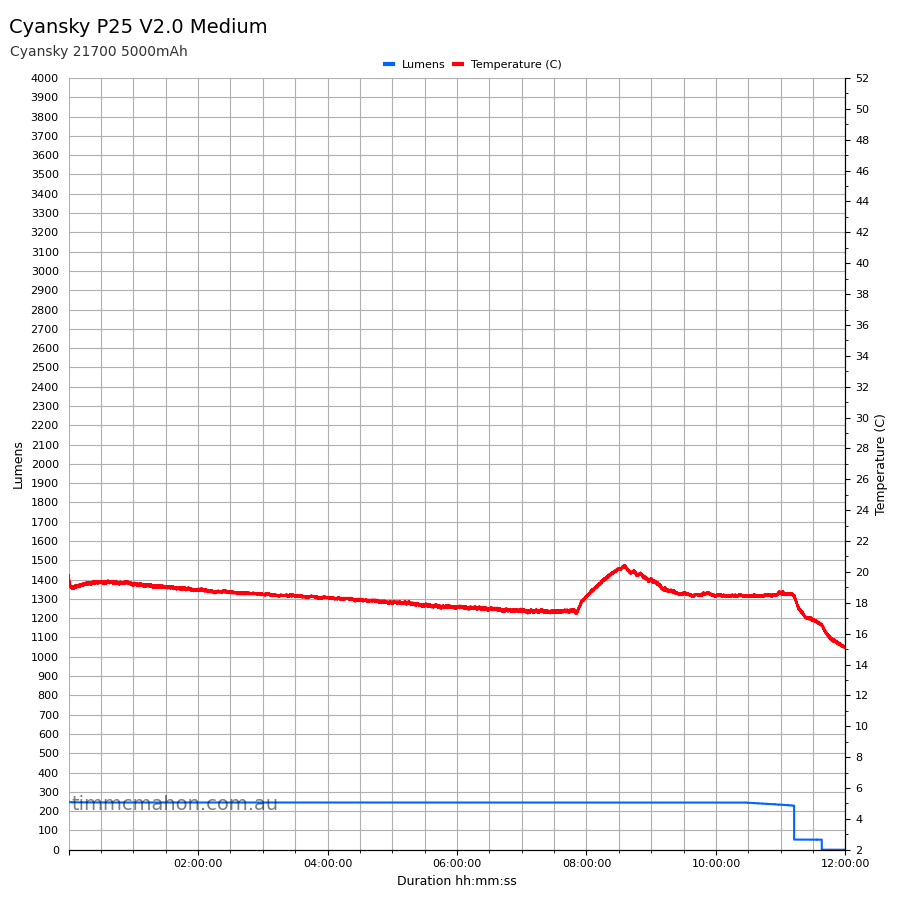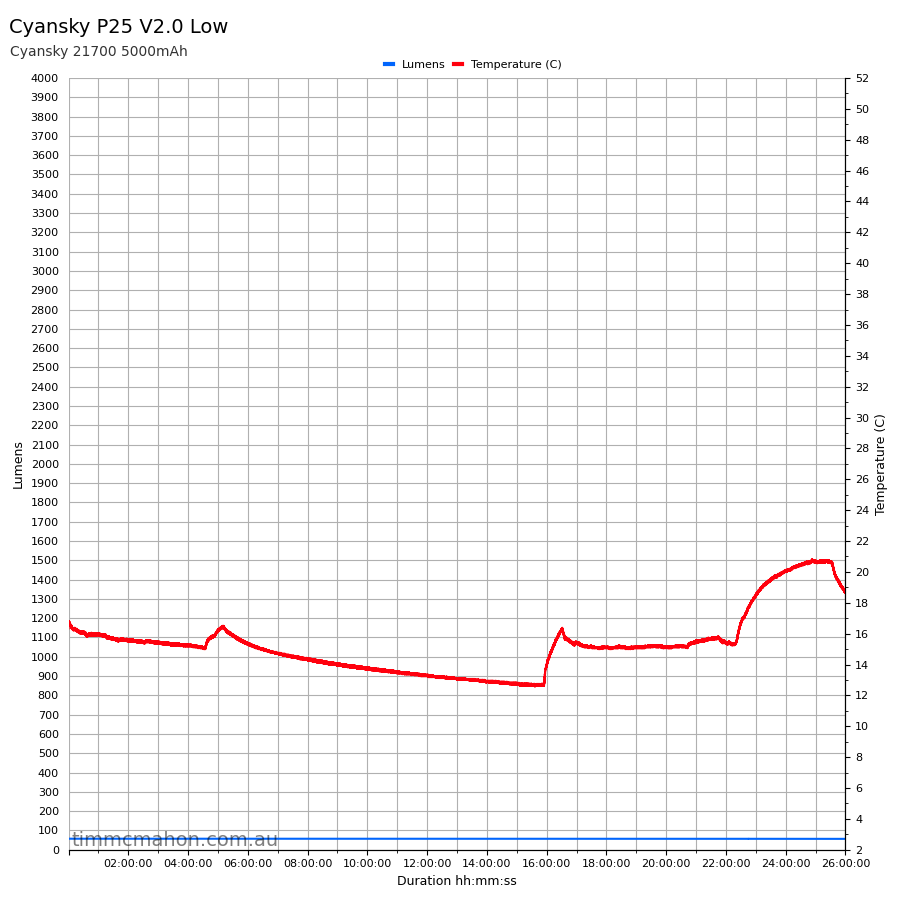Cyansky P25 V2.0 MAO Review
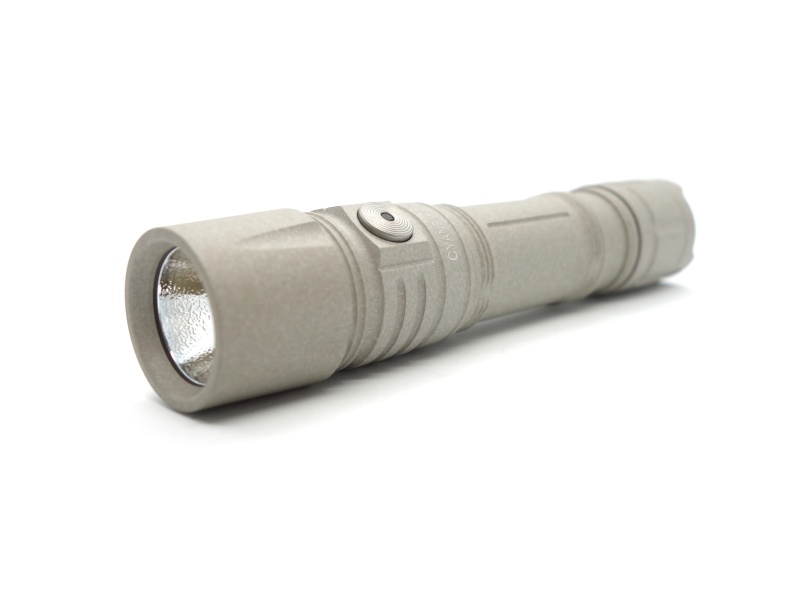
Cyansky P25 V2.0 MAO⌗
- Specifications
- Introduction
- Torch in use
- Build quality
- LED, bezel, lens, reflector and beam
- Size and comparison
- User interface and driver
- Batteries and charging
- Performance
- Beamshots
- Conclusion
- Product page
Specifications⌗
| Brand/model | Cyansky P25 V2.0 |
|---|---|
| LED | CREE XHP70.3 HD |
| Maximum lumens | 3,600 lm |
| Maximum beam intensity | 10,800 cd |
| Maximum throw | 208 m |
| Battery | 1*21700 Li-ion |
| Onboard charging | No (Battery has USB-C) |
| Material | Aluminium |
| Modes | 5 |
| Blinkies | SOS, Strobe |
| Reflector | TIR |
| Waterproof | IPX8 |
| Review date | September 2022 |
Introduction⌗
This review was originally written for 1lumen.com.
I’m pretty excited to lay my hands on my first Micro-Arc Oxidation (MAO) torch. The Cyansky P25 V2.0 comes in either a black anodised finish or a pale silver micro-arc oxidation finish. When Cyansky asked which one I’d like to test, I requested MAO.
Dave previously reviewed the first version of the Cyansky P25 with an XHP70.2 emitter and now I have the opportunity to review the Cyansky P25 V2.0 with an XHP70.3 emitter.
The P25 V2.0 was originally marketed as a tactical torch but, after community feedback about there being no direct access to Strobe or Turbo from off, Cyansky now markets it as a floody Outdoor torch. I’d consider it to be a large EDC torch.
Let’s see what improvements have been made since the first version!
Cyansky kindly provided the torch to review for free. I have not held back my opinions.
Packaging⌗
The P25 V2.0 came in a blue and gray Cyansky branded retail box with a plastic tray. The box features a picture of the torch on the front and has specifications about the torch performance on the back.
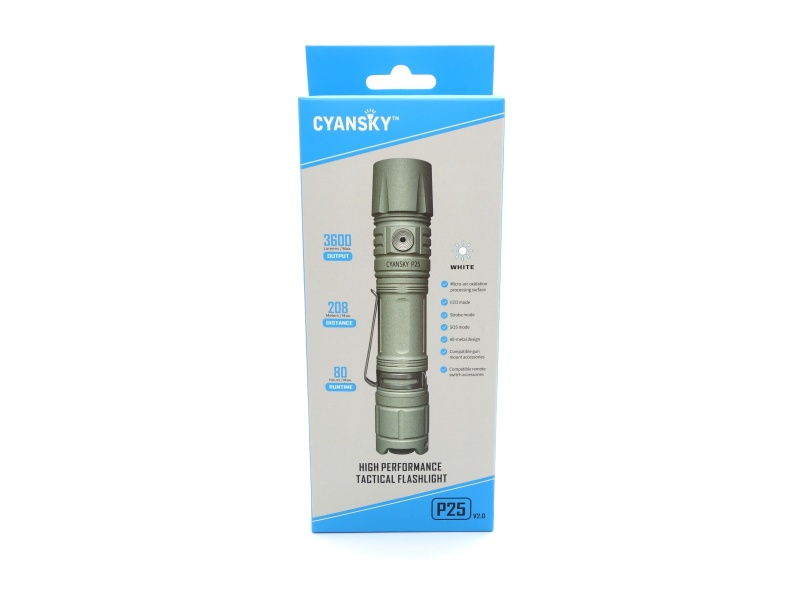
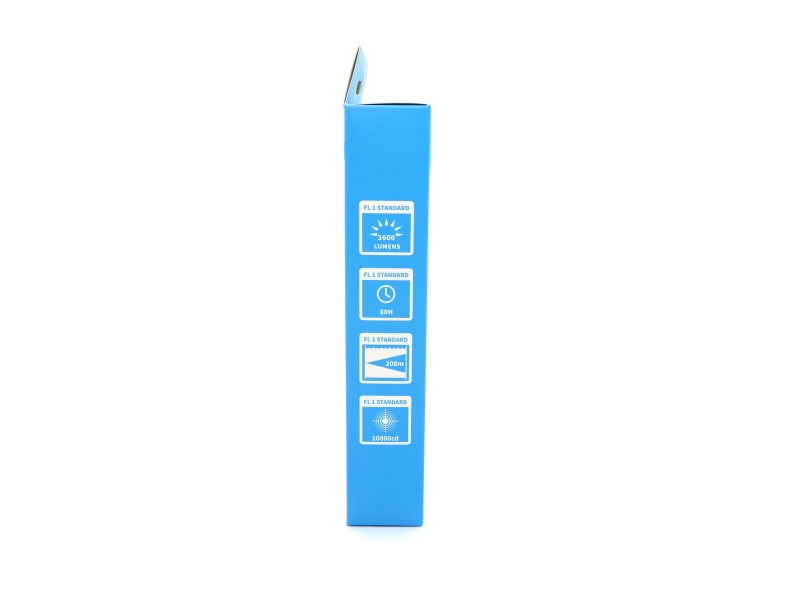
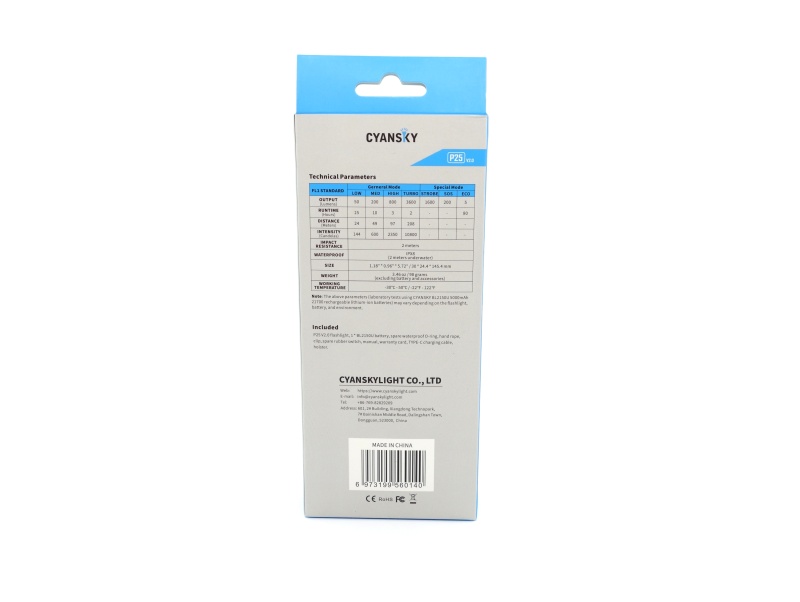
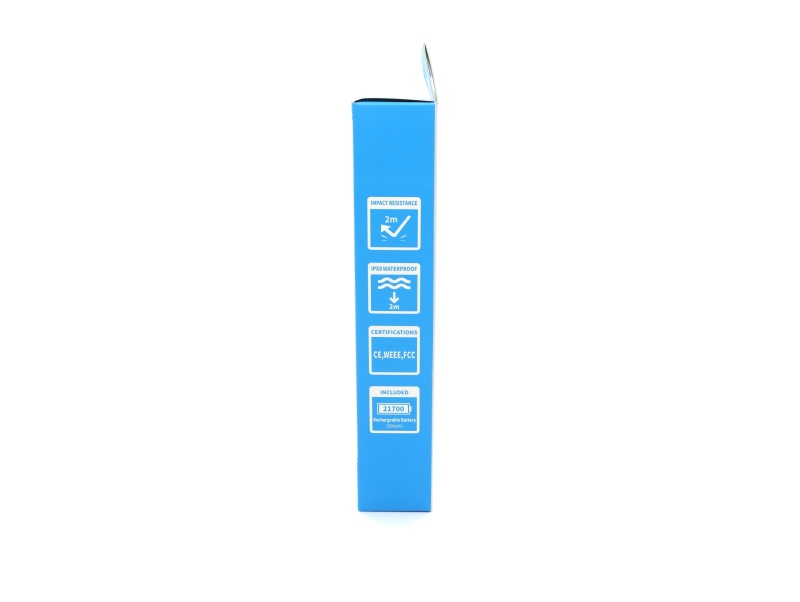
The following was included in the box:
- Cyansky P25 V2.0
- Cyansky BL2150U protected 21700 5000mAh battery with USB-C charging
- Holster
- Spare o-ring
- Spare rubber tail switch boot
- Lanyard
- USB-A to USB-C charging cable
- Manual
- Warranty Card
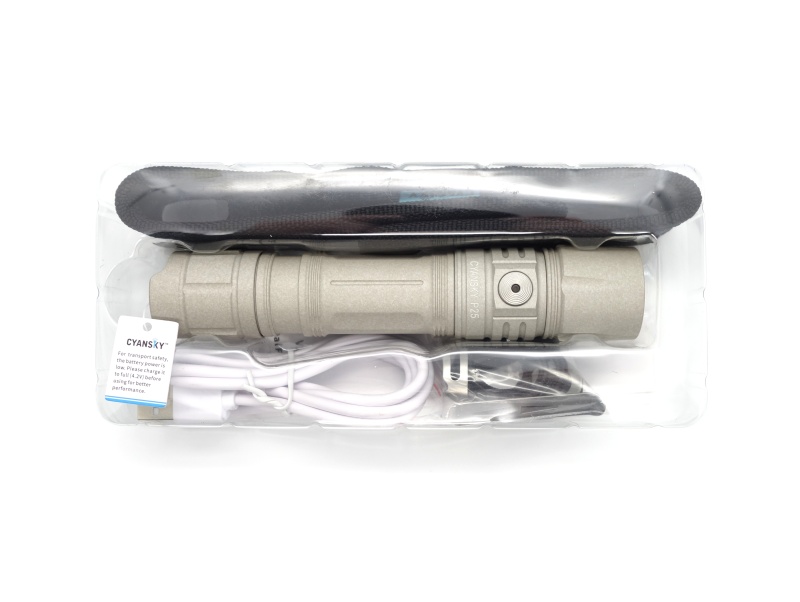
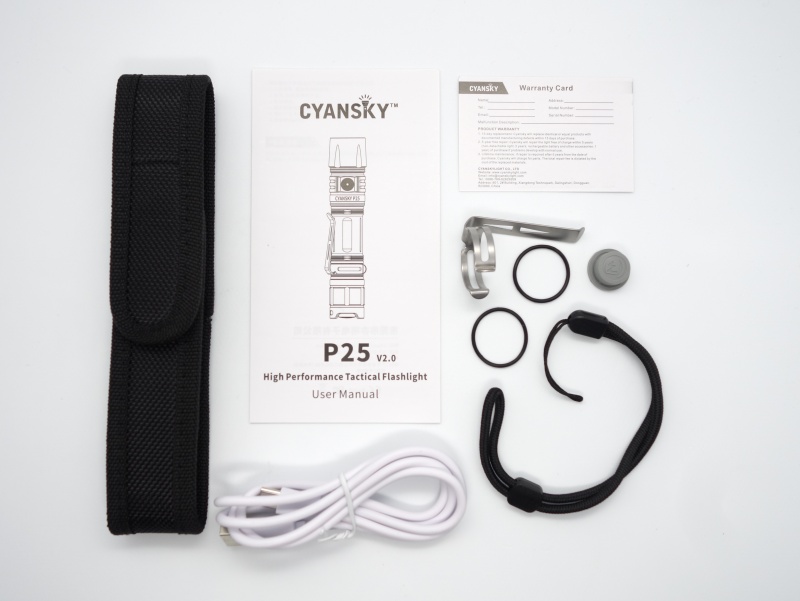
Torch in use⌗
It feels like I’m holding a lightsaber when the Cyansky P25 V2.0 MAO is in my hand. The beam isn’t narrow like a lightsaber but the torch physically reminds me of a lightsaber.
The torch feels smooth and almost chalky. The forward-clicky tail switch has a small boot and it provides a satisfying click when turning the torch on and off. I can easily find the electronic side switch in the dark due to the metal switch cover with a circular pattern that adds grip.
Cyansky included a holster that may be attached to a belt. I didn’t use the holster. Instead, I carried two phones and the P25 V2.0 in one pocket while traveling and they all fit comfortably. It may not be your normal EDC torch due to the size but my phone is longer and my pockets are big.
There are two lanyard holes in the tailcap for the included lanyard. This is a great way to attach a lanyard because it allows the torch to tail stand without the lanyard getting in the way.
A small pocket clip was included but I removed it and scratched the MAO finish. I found that the P25 V2.0 rolls around without the pocket clip attached and stops rolling when it hits the side switch.
The torch can tail stand. I used the P25 V2.0 as a bedside lamp by tailstanding it and entering Eco mode while staying at a hotel. The output was bright so I ended up placing the torch on its side to bounce the beam off a wall instead of illuminating the whole room by bouncing the beam off the ceiling.
The Cyansky P25 V2.0 is also good for walking around a park, walking the dog, and lighting up a forest while camping.
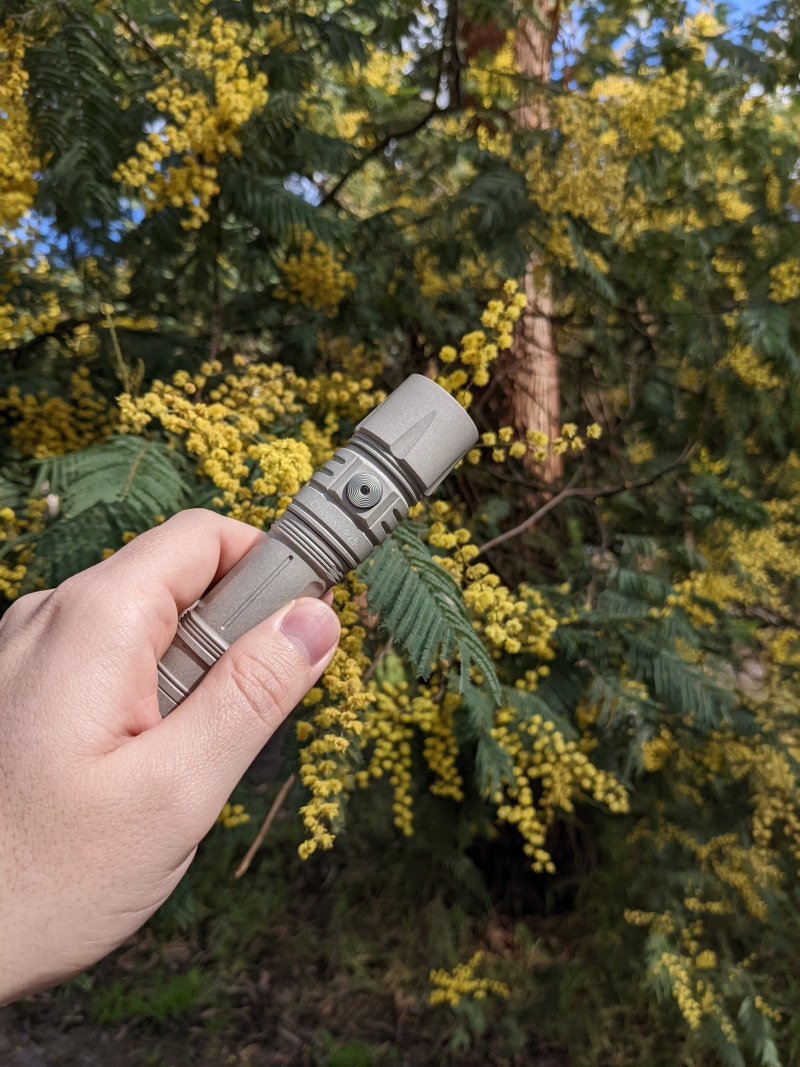
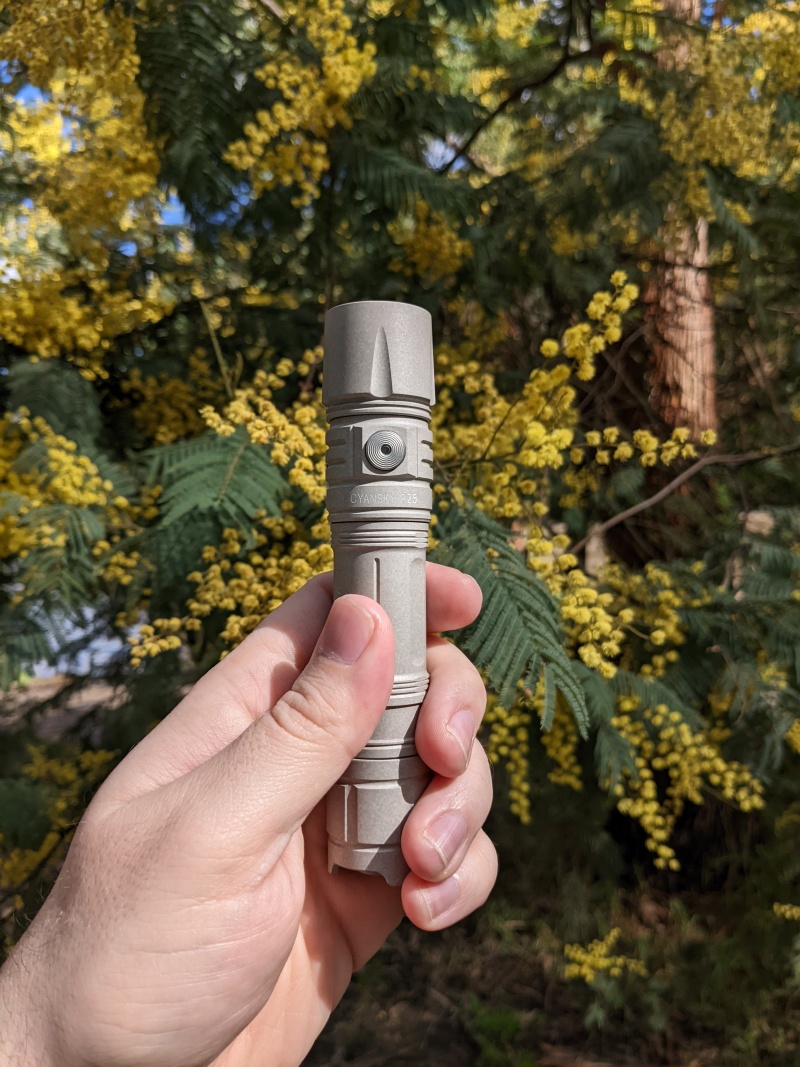
Build quality⌗
The matte silver micro-arc oxidation coating with a marble-like pattern gives this aluminium torch a modern rustic look and feel. It feels smooth and the unique design adds grip. There is plenty of grip on the tail and head, and the tube has seven groves to make it less likely for the torch to slip out of my hand.
The metal side switch with a battery status LED has a grippy circular pattern that makes it easy to find.
The tail switch boot is about half the diameter of the tail cap. It gives a satisfying click when pressed. The forward-clicky switch is firm and activates nicely when pressed.
Two springs in the tail cap help improve battery capability by making a strong connection. The spare switch boot cover can be installed by first removing the retaining ring around the double springs with some tweezers.
Physical reverse polarity protection appears to have been designed in a way that allows flat top 21700 cells to work. The two notches are positioned slightly wide so that they make contact with the cell when it has been inserted incorrectly.
The aluminum body has a Micro-Arc Oxidation coating. The coating is also on the inside of the tube. There are no sharp edges but I stained the torch twice. Once when I got lubricant from the threads on it. And a second time when I left it pressed against a red and white plastic book cover. I managed to wipe the stains off easily.
Square cut threads are smooth to turn but they get dirty with lubricant.
The holster is pretty good! It fits the torch snugly with elastic sides and it has a velcro cover. I saw a video of someone using velcro in a tactical situation but this torch is better suited for general outdoor use.
The small pocket clip fits securely on the torch. It would be nice if it were deep carry. The lanyard is also a bit small.
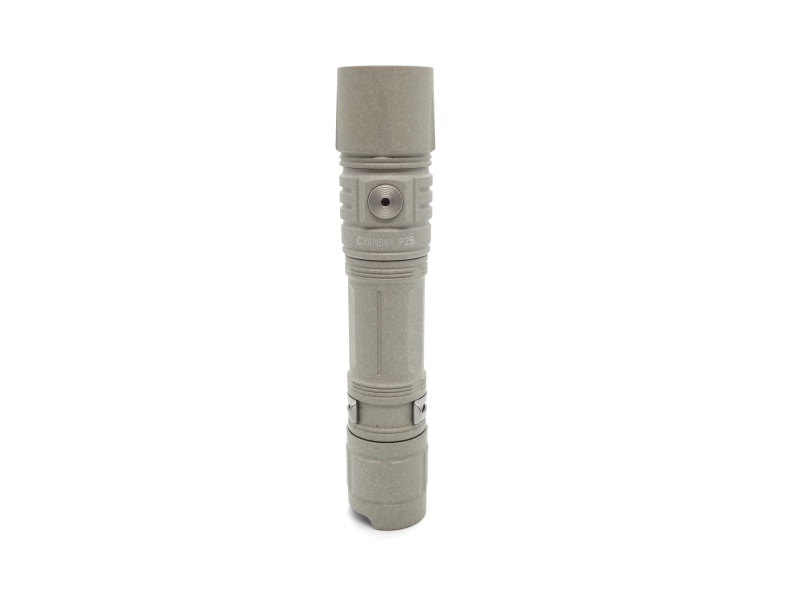
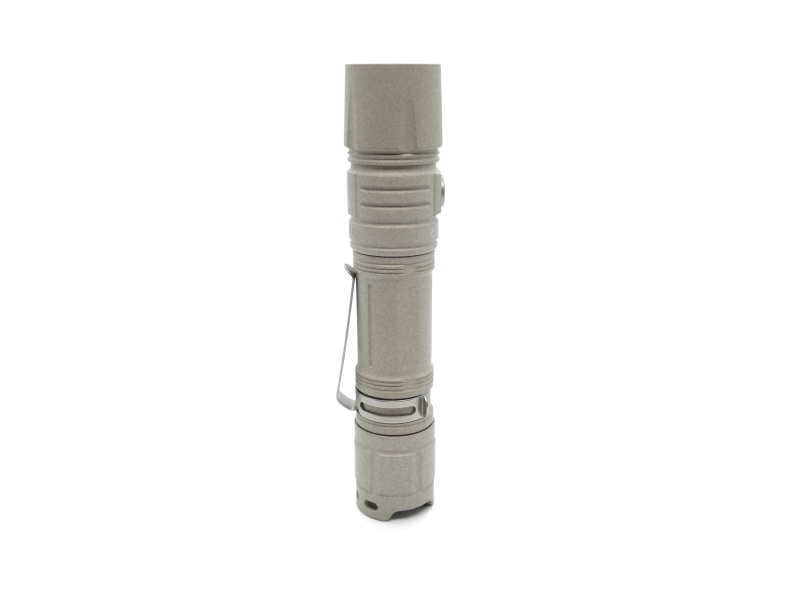
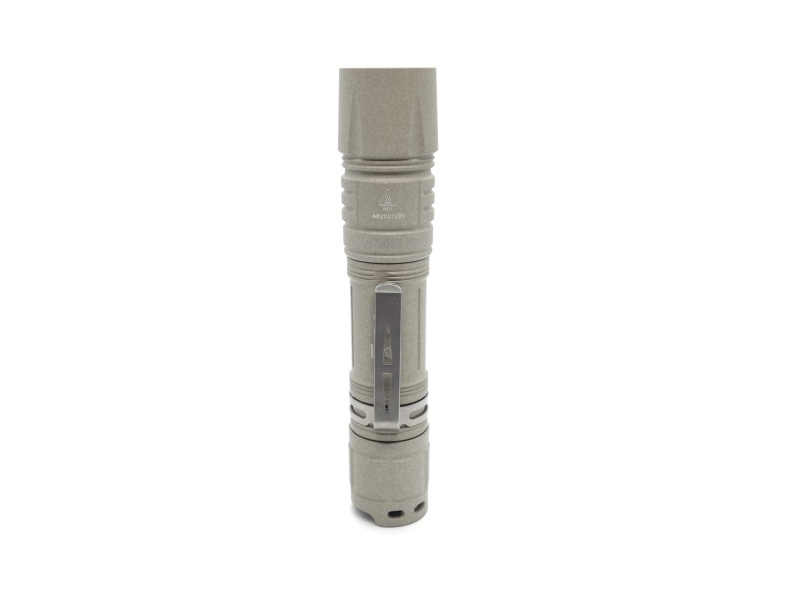
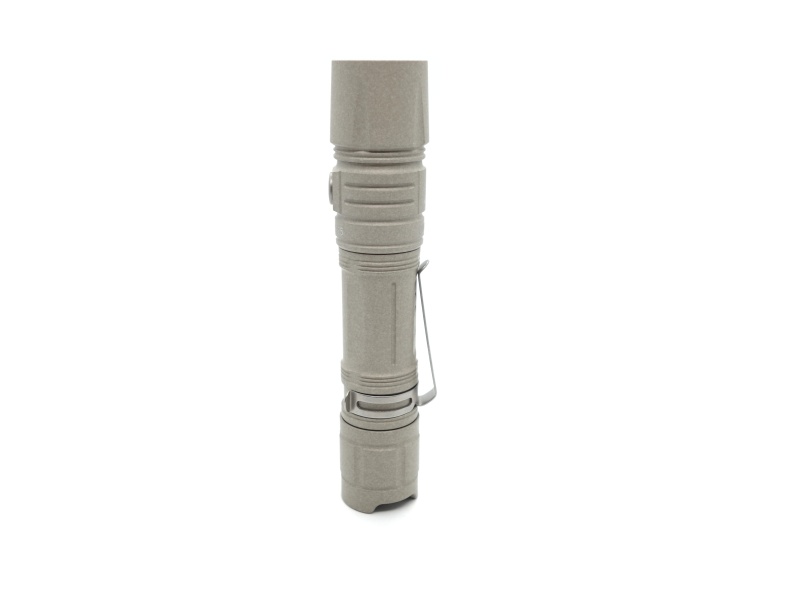
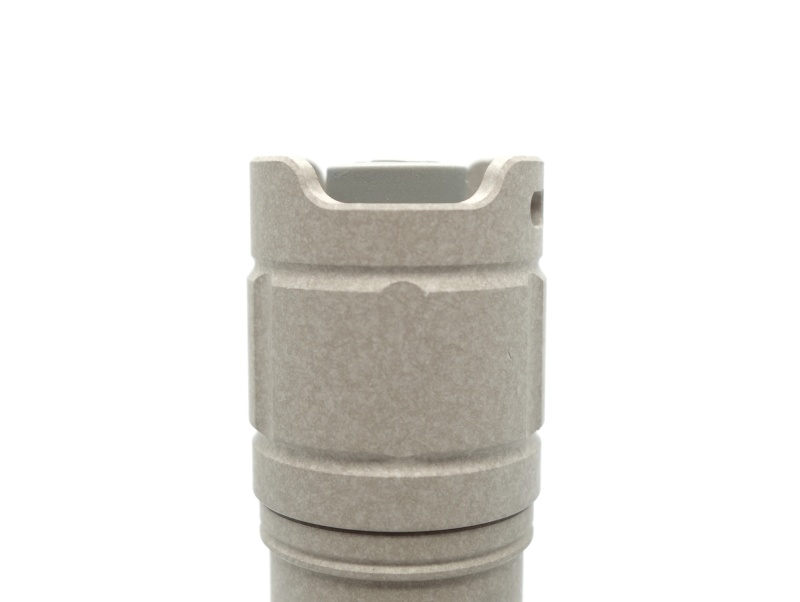
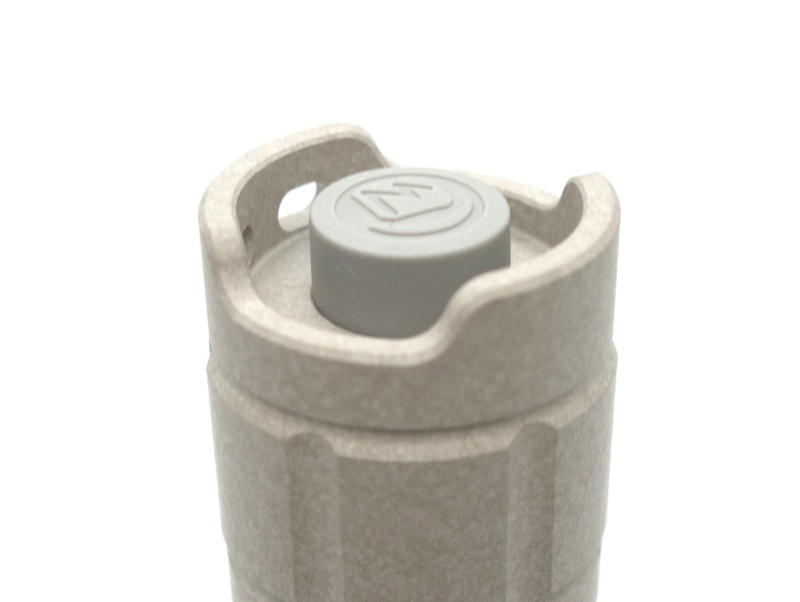
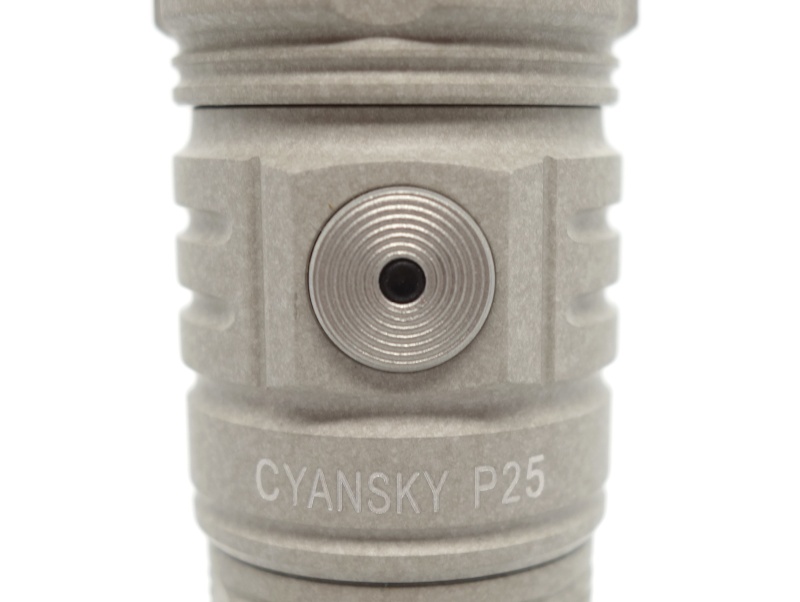
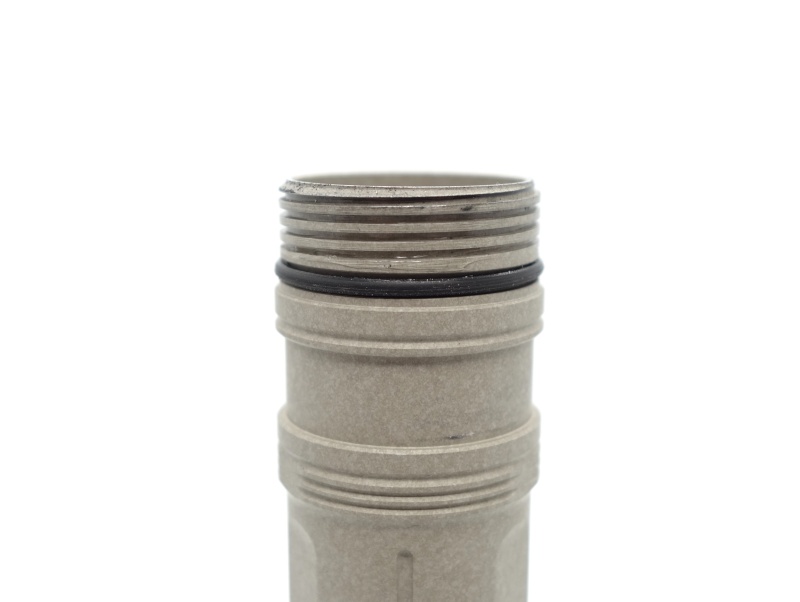
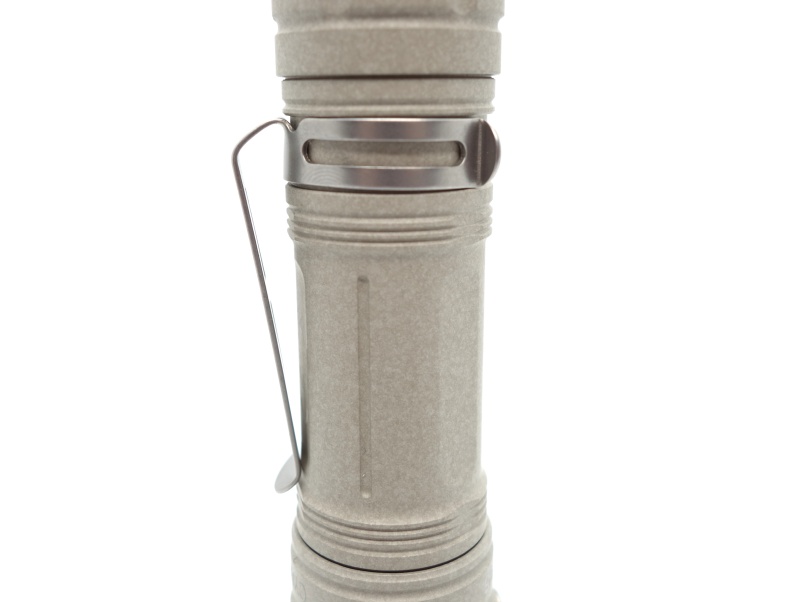
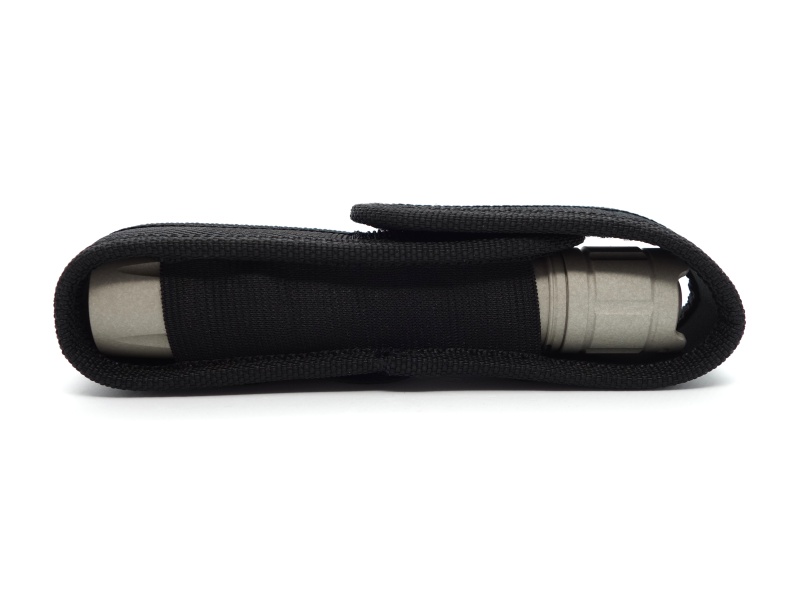
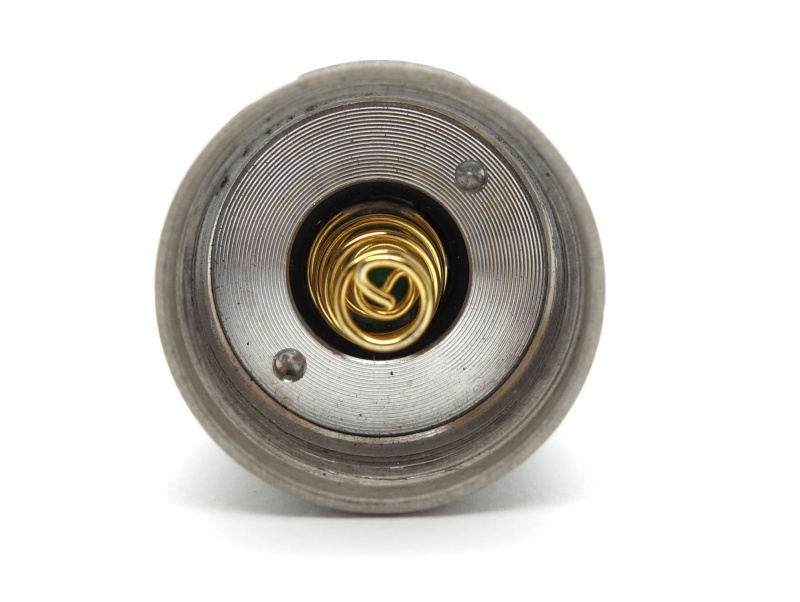
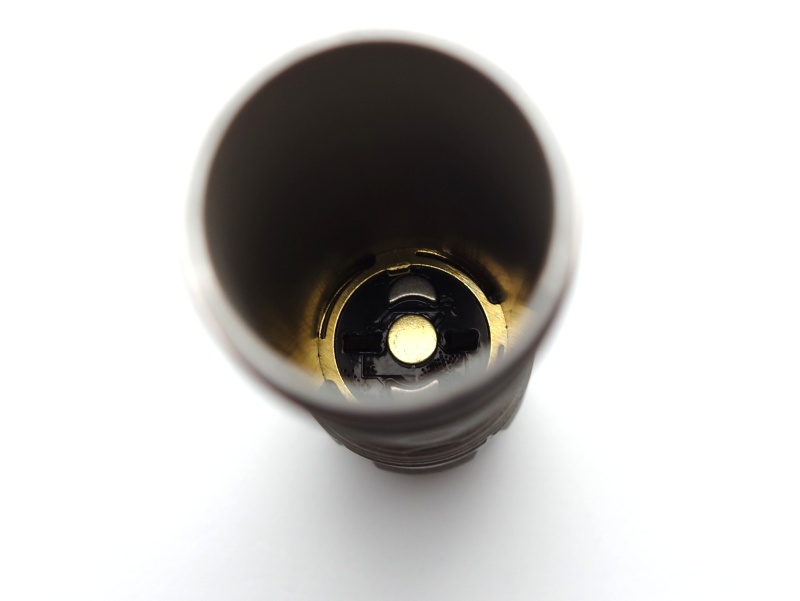
LED, bezel, lens, reflector and beam⌗
The Cyansky P25 V2.0 has a CREE XHP70.3 HD emitter. centered with a white gasket, and surrounded by a small orange peel reflector. A glass lens with an anti-reflective coating sits between the reflector and bezel. The bezel is smooth and appears to be glued down.
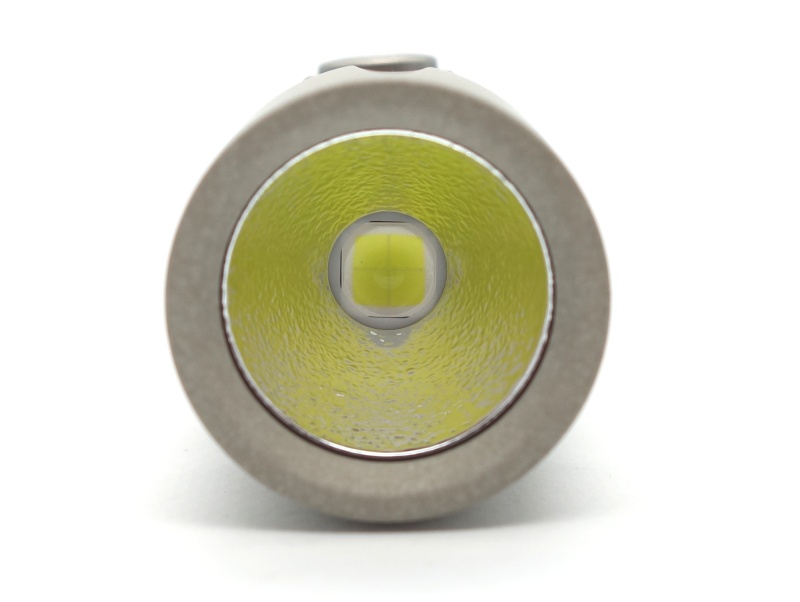
I have taken Correlated Colour Temperature (CCT) and Colour Rendering Index (CRI, RA of R1-R8) measurements with the torch positioned half a metre away from an Opple Light Master Pro III (G3).
The CCT is about 6200K and the CRI is around 71.
The Delta u, v is around 0.003 (slightly green) on lower modes and neutral (pure white) on Turbo.
The beam has a smooth white hot spot with a green corona and a bit of purple around the spill. The beam looks white to my eyes when the view is viewed on a white wall. It is not very green.
| Mode | CCT (K) | CRI (Ra) | x | y | Duv |
|---|---|---|---|---|---|
| Eco | 6211 | 71.0 | 0.3176 | 0.3355 | 0.0041 |
| Low | 6192 | 71.5 | 0.3180 | 0.3349 | 0.0036 |
| Medium | 6213 | 71.6 | 0.3176 | 0.3344 | 0.0035 |
| High | 6237 | 72.0 | 0.3174 | 0.3321 | 0.0025 |
| Turbo | 6739 | 73.1 | 0.3100 | 0.3194 | -0.0004 |
Calculate Duv from CIE 1931 xy coordinates
Dimensions and size comparison⌗
Dimensions⌗
I took the following measurements using digital callipers.
| Measurement | Unit (mm) |
|---|---|
| Torch length | 145.4 |
| Head diameter | 30.1 |
| Tube diameter | 25.9 |
Weight⌗
I took the following measurements using a digital scale.
| Weight | Unit (g) |
|---|---|
| Torch | 94.6 |
| Battery | 72.9 |
| Torch with battery | 167.5 |
Size comparison with its competition⌗
From left to right: VezerLezer ED10, Cyansky P25 V2.0 MAO, Brinyte E18 Pheme
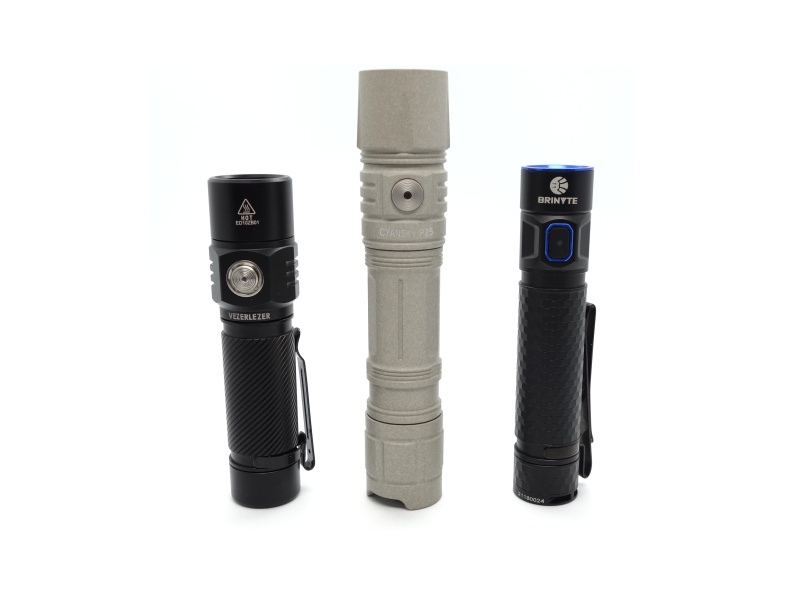
From left to right: VezerLezer ED10, Cyansky P25 V2.0 MAO, Brinyte E18 Pheme
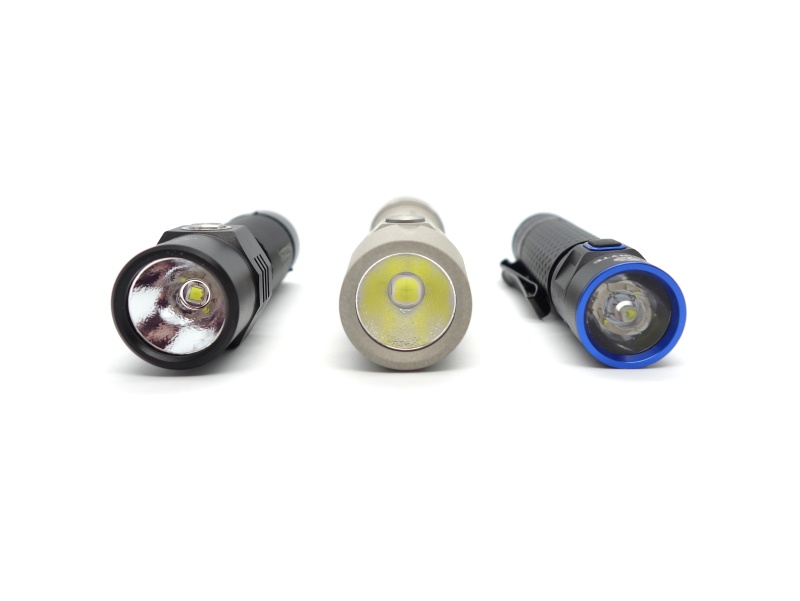
User interface and driver⌗
A boost driver has been used to drive the XHP70.3 emitter.
| State | Action | Result |
|---|---|---|
| Off | Click the tail switch | On (mode memory) |
| Off | Half press the tail switch | Momentary On (mode memory) |
| Off | Hold the side switch and click the tails witch | Eco |
| On | Click the side switch | Cycle (Low, Medium, High, Turbo) |
| On | Press and hold the side switch for 1 second | Strobe |
| Strobe | Press and hold the side switch for 1 second | SOS |
| SOS | Press and hold the side switch for 1 second | Strobe |
| Eco | Click the side switch | Cycle (Low, Medium, High, Turbo) |
Turbo automatically steps down to 1000 lumens after one minute to prevent overheating.
Battery level indication⌗
There is a battery level indicator in the side switch:
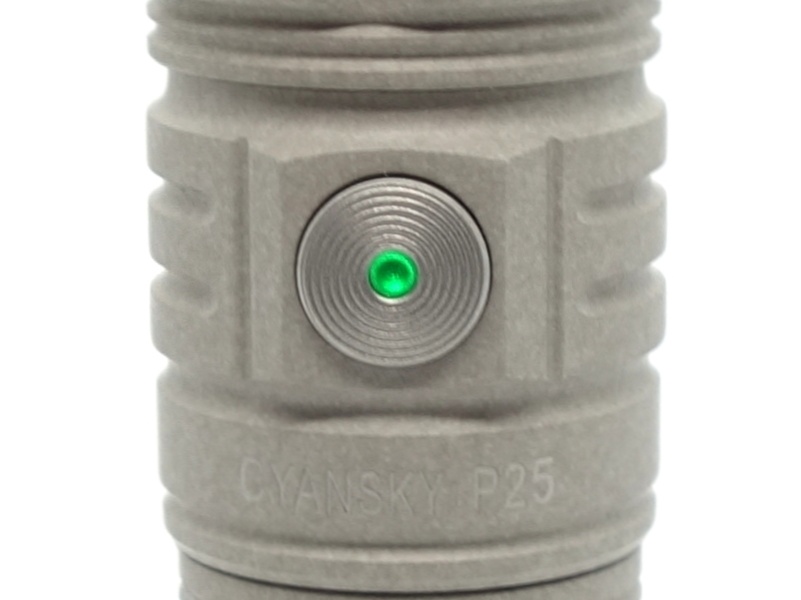
The indicator light in the side switch will turn on for three seconds when the torch is powered on.
| Colour | Battery level |
|---|---|
| Green | 81% - 100% |
| Green blinking | 51% - 80% |
| Red | 21% - 50% |
| Red blinking | 0% - 20% |
Low voltage protection⌗
There is Low Voltage Protection (LVP). The light turned off at 2.81V and continued to consume 0.87mA. The LED indicator in the switch flashes red three times per minute and the main emitter flashes two times per minute when the voltage is low.
PWM⌗
I did not notice any visible PWM (flickering).
What I like about the UI⌗
- Simple and intuitive.
What could be improved⌗
- Direct access to Strobe and Turbo would have been nice. This would make the torch more suitable for tactical purposes.
Batteries and charging⌗
Battery⌗
A protected button top Cyansky 21700 5000mAh cell with built-in USB-C charging was included. The cell was 3.81V upon arrival. It came inside the torch with a piece of plastic to isolate it and prevent accidental activation during transport.
A notice was attached to the torch with the message: “For transport safety, the battery power is low. Please charge it to full (4.2V) before using for better performance.”. To charge the included cell to 4.20V for testing, I used an external charger. The cell fits in most of my external chargers despite having a length of 76.4mm.
Protected button top 21700 cells fit inside the Cyansky P25 V2.0. An unprotected flat top Samsung 40T 21700 cell worked but it rattled and disconnected when the torch was knocked around.
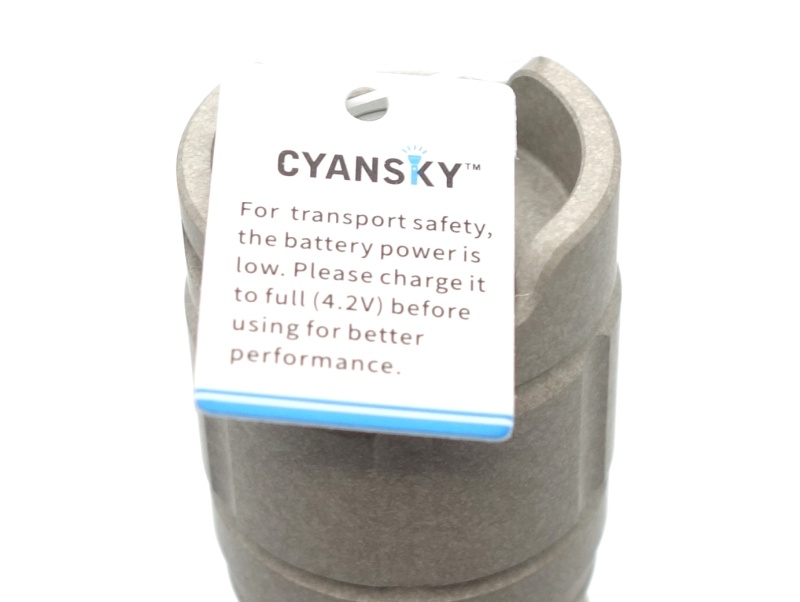
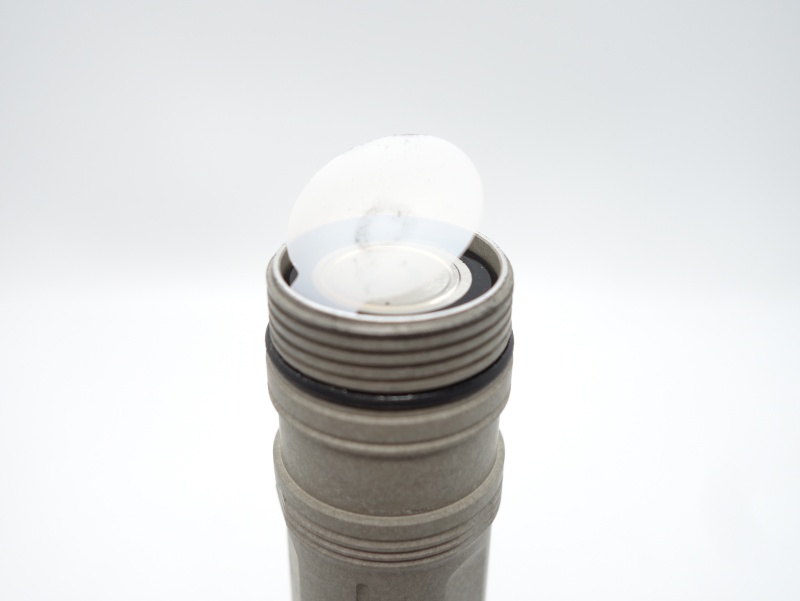
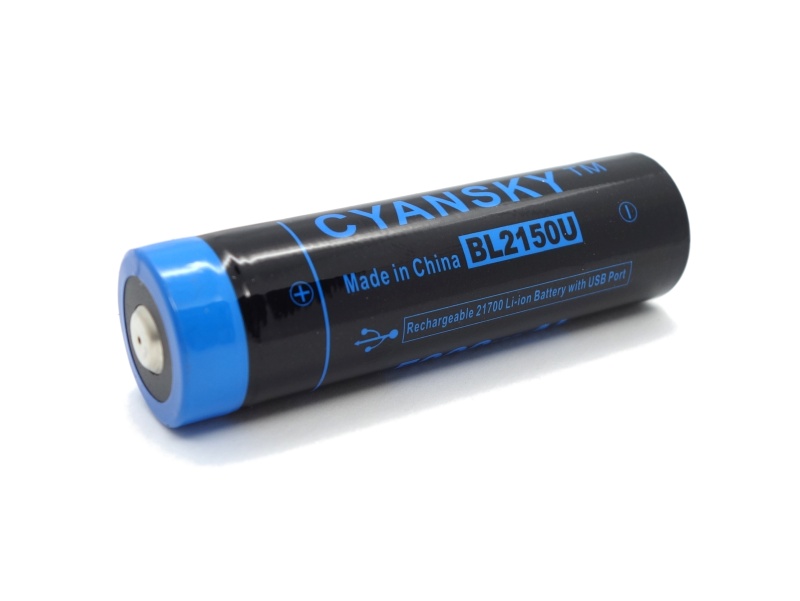
Charging⌗
A LED in the button top turned red while the cell was charging and it changed to green when charging was complete.
I discharged the cell to 2.6V and connected it to a USB-C power supply (USB-C to USB-C works). The cell finished charging after 4h6min with a voltage of 4.16V. The charging current peaked at around 1.4A.
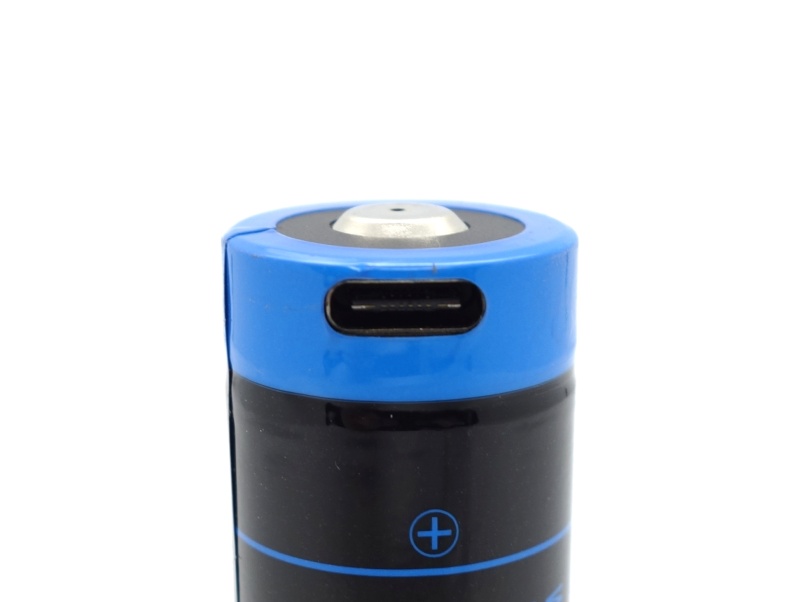
Power supply compatibility⌗
I tried the following power supplies with the included battery:
| Power supply | USB Type | Protocol | Does it charge? |
|---|---|---|---|
| Apple 61W Power Adapter | USB-C | PD | Yes |
| PinePower Desktop | USB-C | PD | Yes |
| PinePower Desktop | USB-A | QC | Yes |
| Generic 5V 2.4A Power Adapter | USB-A | Yes |
USB-C to USB-C works.
Performance⌗
Specifications from the manual:
| FL1 STANDARD | Low | Medium | High | Turbo | Strobe | SOS | Eco |
|---|---|---|---|---|---|---|---|
| Output (lumens) | 50 | 200 | 800 | 3,600 | 1,600 | 200 | 5 |
| Runtime (hours) | 25 | 10 | 3 | 2 | 80 | ||
| Beam Distance (metres) | 24 | 49 | 97 | 208 | |||
| Beam Intensity (cd) | 144 | 600 | 2,350 | 10,800 |
Lumen measurements⌗
I used a UNI-T UT210E clamp meter to measure the current at turn on.
| Mode | Amps at start | Specs | Lumens @turn on | Lumens @30 sec | Lumens @10 min |
|---|---|---|---|---|---|
| Eco | 0.04 A | 5 | 9 | 9 | 9 |
| Low | 0.10 A | 50 | 57 | 56 | 56 |
| Medium | 0.35 A | 200 | 249 | 246 | 245 |
| High | 1.37 A | 800 | 848 | 834 | 824 |
| Turbo | 11.08 A | 3600 | 3902 | 3720 | 1144 |
Standby drain⌗
No standby drain. This torch has a mechanical tail switch.
Runtime graphs⌗
I built a lumen tube and forked bmengineer’s project RuTiTe to add support for a VEML7700 light sensor and MCP9808 temperature sensor with help from Owen. The Cyansky P25 V2.0 made me question the accuracy of my DIY lumen tube when measuring torchs that produce more than 1200 lumens. I replaced the sensor with a TSL2591 and calibrated the lumen tube with a torch from maukka. My DIY lumen tube now appears to be slightly more accurate.
Note: Lumen measurements may be off by 10% with my DIY lumen tube. Temperature may vary due to the room temperature changing.
The included cell was used for testing and charged to 4.20V before each runtime test and before measuring the current at turn on.
It is amazing to see that Cyansky has included a runtime graph in the user manual. After doing runtime tests myself, I found that the P25 V2.0 slightly exceeded the manufacturer specifications. Trust, but verify!
I stopped runtime testing for Low at 26 hours, High at 4 hours and Turbo at 3 hours. The torch continued to run with a low light output of around 50 lumens for those modes. I tested Eco for 11 minutes to get lumen measurements for the first 10 minutes.
Throw⌗
I took lux measurements with a UT383BT after 30 seconds for each mode. Eco and Low were measured at two metres. Medium, High and Turbo were measured at five metres.
The included 18650 cell was used. I charged it up to 4.20 V before measuring each mode.
| Mode | Specs (cd) | Specs (m) | Candela measured (cd) | Distance (m) |
|---|---|---|---|---|
| Eco | 12 | 6 | ||
| Low | 144 | 24 | 156 | 24 |
| Medium | 600 | 49 | 725 | 53 |
| High | 2,350 | 97 | 3,075 | 110 |
| Turbo | 10,800 | 208 | 14,100 | 237 |
Beamshots⌗
I went to a local park and aimed the Cyansky P25 V2.0 at a tree 70 metres away while using Turbo.
Beamshots were taken using a Sony RX100M2 using 3.2", f3.2, ISO 100, 5000K WB.
Cyansky P25 V2.0⌗
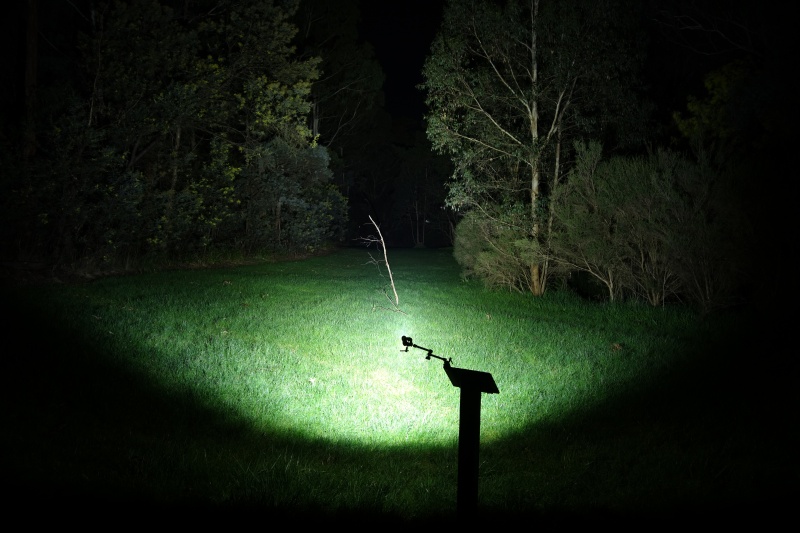
VezerLezer ED10 6500K⌗
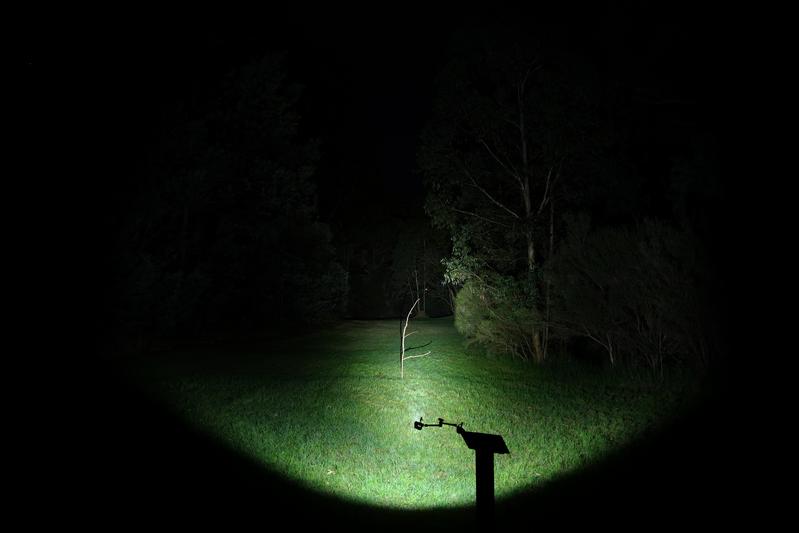
SPERAS EST⌗
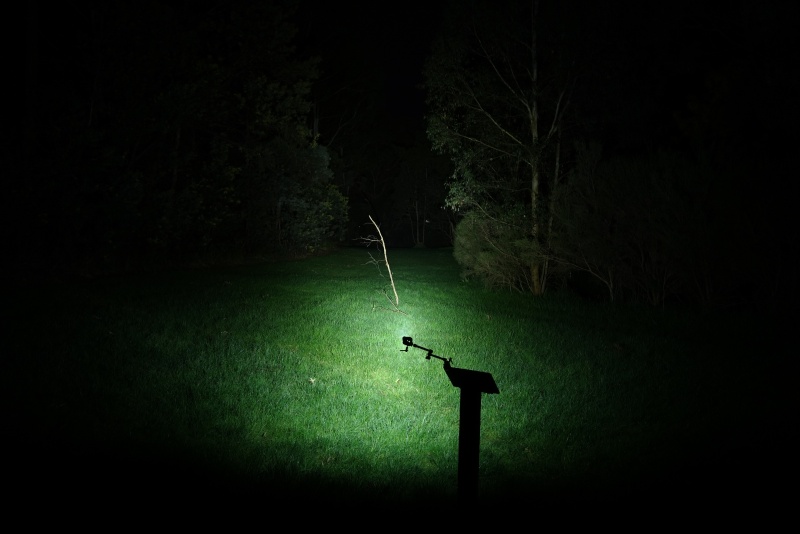
Olight Warrior Mini 2⌗
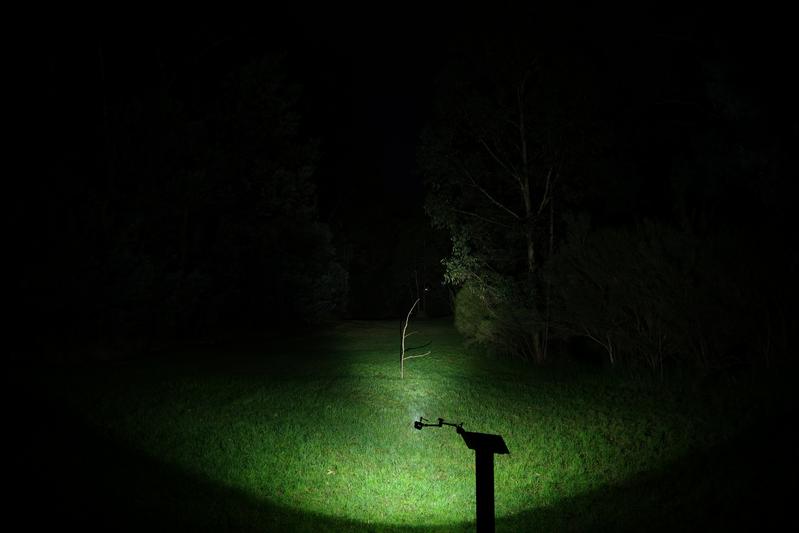
Conclusion⌗
The Cyansky P25 V2.0 is definitely an improvement over the first version. It throws further with a beam distance of 208 metres on Turbo. It has an additional Eco mode for 9 lumens which is much better for EDC use. And it has improved regulation with smooth light output on Turbo.
The micro-arc oxidation coating feels smooth and almost chalky but it stains easily. Other manufacturers have reported similar issues. Perhaps this is something to be mindful of when getting a MAO coated torch. It is something that can be improved.
I would have preferred a slightly higher CRI given that this is an Outdoor EDC torch. The XHP70.3 emitter is around 71 CRI. That said, I enjoy carrying this while walking around a park at night. It clearly lights up the path and everything around it.
It is a little expensive at US$99.95. But you get a complete kit with: torch, battery with built-in USB-C charging, charging cable and a holster.
The build quality is excellent and it performs better than the manufacturer specifications as a pocket flooder.
Pros:⌗
- Excellent build quality
- Simple user interface
- Light output is well regulated
- Well thought out kit provided
- 21700 cell with USB-C charging included
Cons:⌗
- Low CRI
- Micro-arc oxidation coating stains easily
